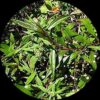- Empty cart.
- Continue Shopping
Vishamooli (Lepidodendron)
₹690.00 Original price was: ₹690.00.₹510.00Current price is: ₹510.00.
Genus : Leidodendron
“Introduce the aromatic and flavorful Dal Chinni Plant, also known as Cinnamon Bark Plant, to your garden. This prized botanical treasure not only adds beauty to your outdoor space but also offers a range of culinary and medicinal benefits. With its distinctive fragrance and distinctive bark, the Dal Chinni Plant is a versatile addition to any garden or landscape. Harvest the cinnamon bark for use in various dishes, beverages, or herbal remedies. Cultivate this remarkable plant and experience the allure of nature’s spice.”
Lepidodendron is an extinct plant genus that lived during the Carboniferous period, approximately 359 to 299 million years ago. It belongs to the group of plants known as lycopsids, which includes modern-day clubmosses.
Lepidodendron was a tall tree-like plant that could grow up to 30 meters (100 feet) tall, with a trunk that was up to 1 meter (3 feet) in diameter. The trunk was covered with diamond-shaped scales that were arranged in rows, giving the plant its name, which means “scale tree.” The scales overlapped like shingles on a roof and helped to protect the plant from environmental stresses.
The leaves of Lepidodendron were small and needle-like, and were arranged in spirals around the stem. The plant reproduced using spores, which were produced in cone-like structures called strobili that grew at the top of the plant.
Lepidodendron was one of the dominant plants during the Carboniferous period, and its remains are commonly found in coal deposits, where they are often preserved as fossils. The plant played an important role in the formation of coal, as its dense, woody tissues were buried and compressed over millions of years to form coal seams.
Today, Lepidodendron is an important fossil plant that provides valuable information about the evolution of plants and the ecology of ancient ecosystems.












Reviews
There are no reviews yet.